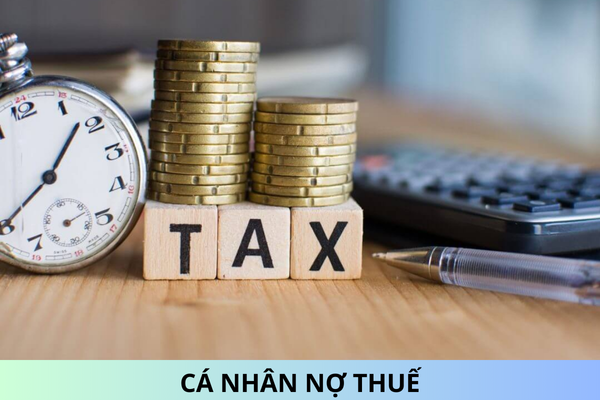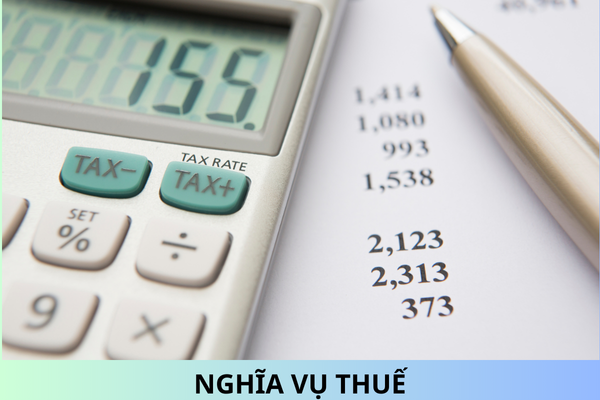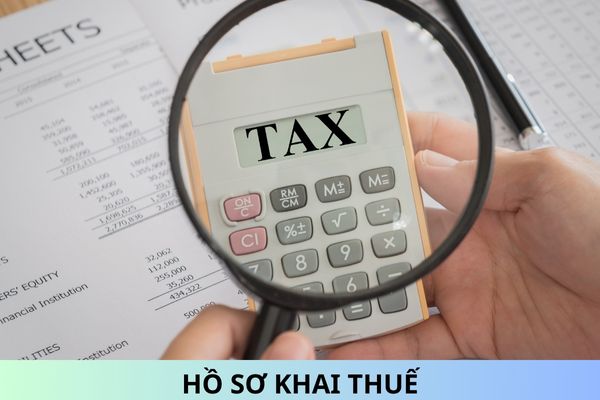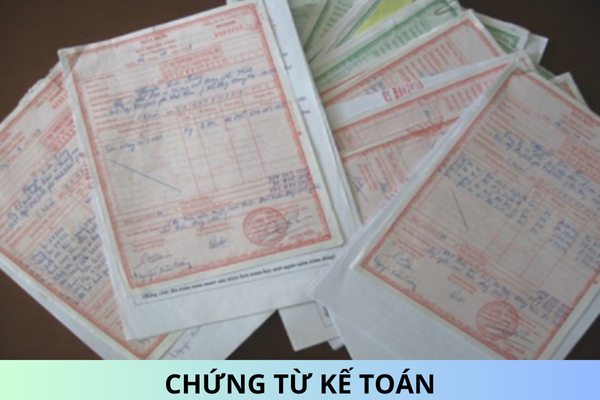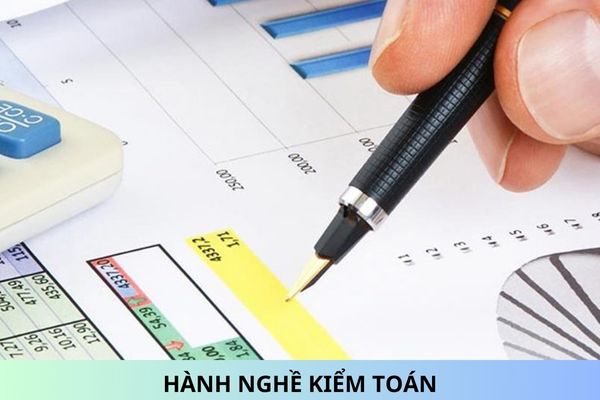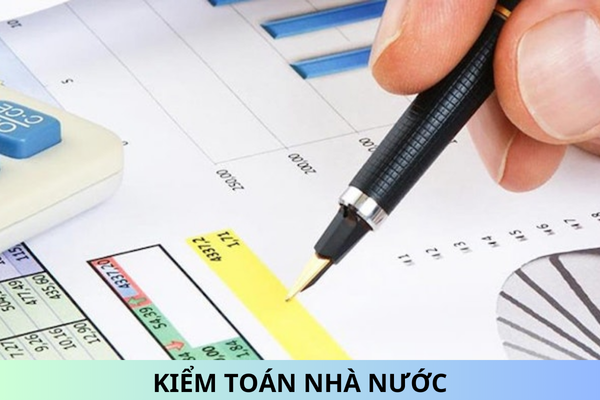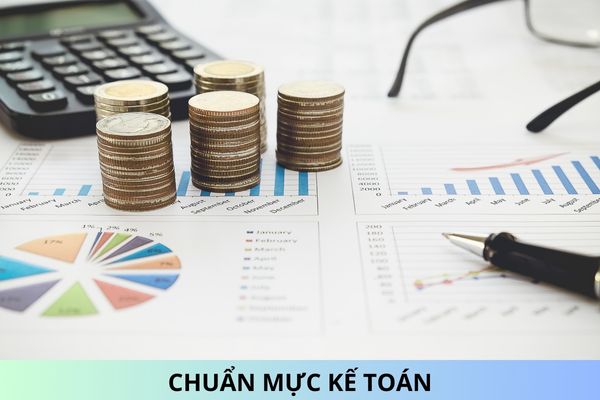What is latest accounting balance sheet today in Vietnam?
Please ask: What is latest accounting balance sheet today in Vietnam?- Question from Mr. Phap (Phu Yen).
What is latest accounting balance sheet today in Vietnam?
Circular 200/2014/TT-BTC stipulates the balance sheet template as follows:
- The enterprise's Balance Sheet template that meets the assumption of continuous operations is Form B 01 - DN issued with Circular 200/2014/TT-BTC.
|
Reporting unit:……………….... |
Model number B01 – DN |
|
Address:…………………………. |
(Issued according to Circular No. 200/2014/TT-BTC December 22, 2014 of the Ministry of Finance) |
ACCOUNTING BALANCE SHEET
At date ... month ... year ...(1)
(Applicable to businesses that meet the continuous operation assumption)
Unit:.............
|
ASSET |
Code number
|
Present |
Year-end number (3) |
Number the begin of the year (3) |
|
1 |
2 |
3 |
4 |
5 |
|
A - SHORT-TERM ASSETS
|
100 |
|||
|
I. Cash and cash equivalents |
110 |
|||
|
1. Money |
111 |
|||
|
2. Cash equivalents
|
112 |
|||
|
II. Short-term financial assets |
120 |
|||
|
1. Trading securities |
121 |
|||
|
2. Provision for devaluation of trading securities (*) |
122 |
(…) |
(…) |
|
|
3. Investment held until maturity
|
123
|
|||
|
III. Short-term receivables |
130 |
|||
|
1. Short-term receivables from customers |
131 |
|||
|
2. Short-term advance payments to sellers |
132 |
|||
|
3. Short-term internal receivables |
133 |
|||
|
4. Receivables according to construction contract plan progress |
134 |
|||
|
5. Receivables from short-term loans |
135 |
|||
|
6. Other short-term receivables |
136 |
|||
|
7. Provision for short-term bad debts (*) |
137 |
|||
|
8. Missing assets awaiting resolution
|
139 |
|||
|
IV. Inventory |
140 |
|||
|
1. Inventory |
141 |
|||
|
2. Provision for devaluation of inventory (*) |
149 |
(…) |
(…) |
|
|
V. Other short-term assets |
150 |
|||
|
1. Short-term prepaid expenses |
151 |
|||
|
2. VAT is deductible |
152 |
|||
|
3. Taxes and other amounts receivable from the State |
153 |
|||
|
4. Repurchase transactions of Government bonds |
154 |
|||
|
5. Other short-term assets |
155 |
|||
|
B - LONG-TERM ASSETS
|
200 |
|||
|
I. Long-term receivables |
210 |
|||
|
1. Long-term receivables from customers |
211 |
|||
|
2. Long-term advance payments to sellers |
212 |
|||
|
3. Business capital in affiliated units |
213 |
|||
|
4. Long-term internal receivables |
214 |
|||
|
5. Receivables from long-term loans |
215 |
|||
|
6. Other long-term receivables |
216 |
|||
|
7. Provision for long-term bad debts (*)
|
219 |
(...) |
(...) |
|
|
II. Fixed assets |
220 |
|||
|
1. Tangible fixed assets |
221 |
|||
|
- Original price |
222 |
|||
|
- Accumulated depreciation value (*) |
223 |
(…) |
(…) |
|
|
2. Financial leased fixed assets |
224 |
|||
|
- Original price |
225 |
|||
|
- Accumulated depreciation value (*) |
226 |
(…) |
(…) |
|
|
3. Intangible fixed assets |
227 |
|||
|
- Original price |
228 |
|||
|
- Accumulated depreciation value (*)
|
229 |
(…) |
(…) |
|
|
III. Investment real estate |
230 |
|||
|
- Original price |
231 |
|||
|
- Accumulated depreciation value (*) |
232 |
|||
|
(…) |
(…) |
|||
|
IV. Long-term unfinished assets 1. Long-term unfinished production and business costs 2. Construction in progress costs |
240 241 242 |
|||
|
V. Long-term financial investment |
250 |
|||
|
1. Invest in subsidiaries |
251 |
|||
|
2. Invest in joint ventures and affiliated companies |
252 |
|||
|
3. Invest and contribute capital to other units 4. Provision for long-term financial investments (*) |
253 254 |
|||
|
5. Investment held until maturity |
255 |
(…) |
(…) |
|
|
BECAUSE. Other long-term assets |
260 |
|||
|
1. Long-term prepaid expenses |
261 |
|||
|
2. Deferred tax assets |
262 |
|||
|
3. Equipment, supplies, and long-term replacement parts |
263 |
|||
|
4. Other long-term assets |
268 |
|||
|
TOTAL ASSETS (270 = 100 + 200)
|
270 |
|||
|
C - LIABILITIES
|
300 |
|||
|
I. Short-term debt |
310 |
|||
|
1. Short-term payables to suppliers |
311 |
|||
|
2. Buyer pays short-term in advance |
312 |
|||
|
3. Taxes and amounts payable to the State |
313 |
|||
|
4. Payable to employees |
314 |
|||
|
5. Short-term payable expenses |
315 |
|||
|
6. Short-term internal payables |
316 |
|||
|
7. Payable according to construction contract plan progress |
317 |
|||
|
8. Short-term unearned revenue |
318 |
|||
|
9. Other short-term payables |
319 |
|||
|
10. Short-term finance lease loans and debt |
320 |
|||
|
11. Provision for short-term payables |
321 |
|||
|
12. Bonus and welfare fund |
322 |
|||
|
13. Price stabilization fund |
323 |
|||
|
14. Resale transactions of Government bonds
|
324 |
|||
|
II. Long-term liabilities |
330 |
|||
|
1. Long-term payables to suppliers |
331 |
|||
|
2. Buyer pays in advance long term |
332 |
|||
|
3. Long-term expenses |
333 |
|||
|
4. Internal payables for business capital |
334 |
|||
|
5. Long-term internal payables |
335 |
|||
|
6. Long-term unearned revenue |
336 |
|||
|
7. Other long-term payables |
337 |
|||
|
8. Long-term financial lease loans and debt |
338 |
|||
|
9. Convertible bonds |
339 |
|||
|
10. Preferred shares |
340 |
|||
|
11. Deferred income tax payable |
341 |
|||
|
12. Long-term provisions for payables |
342 |
|||
|
13. Science and technology development fund
|
343 |
|||
|
D - OWNER'S CAPITAL |
400
|
|||
|
I. Equity |
410 |
|||
|
1. Owner's capital contribution - Ordinary shares have voting rights - Preferred shares |
411 411a 411b |
|||
|
2. Share surplus |
412 |
|||
|
3. Bond conversion option |
413 |
|||
|
4. Other capital of the owner |
414 |
|||
|
5. Treasury shares (*) |
415 |
(...) |
(...) |
|
|
6. Differences in asset revaluation |
416 |
|||
|
7. Exchange rate differences |
417 |
|||
|
8. Development investment fund |
418 |
|||
|
9. Fund to support business arrangements |
419 |
|||
|
10. Other equity funds |
420 |
|||
|
11. Undistributed after-tax profits - Undistributed PAT accumulated to the end of the previous period - Undistributed NPAT this period |
421 421a 421b |
|||
|
12. Source of investment capital for capital construction
|
422 |
|||
|
II. Other sources of funding and funds |
430 |
|||
|
1. Funding source |
431 |
|||
|
2. Funding source to form fixed assets |
432 |
|||
|
TOTAL CAPITAL RESOURCES (440 = 300 + 400)
|
440 |
..., date...month...year...
|
Schedule maker |
Chief accountant |
Manager |
|
(Sign, full name) - Practicing certificate number; - Accounting service provider |
(Sign, full name) |
(Sign, full name, stamp) |
- The sample Balance Sheet of an enterprise that does not meet the assumption of continuous operation is Form B 01/CDHD – DNKLT issued with Circular 200/2014/TT-BTC.
|
Reporting unit:……………….... |
Form No. B 01/CDHD – DNKLT |
|
Address:…………………………. |
(Issued according to Circular No. 200/2014/TT-BTC December 22, 2014 of the Ministry of Finance) |
ACCOUNTING BALANCE SHEET
At date ... month ... year ...(1)
(Applicable to businesses that do not meet the going concern assumption)
Unit:.............
|
ASSET |
Code number
|
Present |
Year-end number (3) |
Number the begin of the year (3) |
|
1 |
2 |
3 |
4 |
5 |
|
A - ASSETS
|
100 |
|||
|
I. Cash and cash equivalents |
110 |
|||
|
1. Money |
111 |
|||
|
2. Cash equivalents
|
112 |
|||
|
II. Financial investment |
120 |
|||
|
1. Trading securities |
121 |
|||
|
2. Investment held until maturity |
122 |
|||
|
3. Invest in subsidiaries |
123 |
|||
|
4. Invest in joint ventures and affiliated companies |
124 |
|||
|
5. Invest and contribute capital to other units |
125 |
|||
|
III. Receivables |
130 |
|||
|
1. Receivables from customers |
131 |
|||
|
2. Pay the seller in advance |
132 |
|||
|
3. Business capital in affiliated units |
133 |
|||
|
4. Internal receivables |
134 |
|||
|
5. Loan receivables |
135 |
|||
|
6. Receivables according to construction contract plan progress |
136 |
|||
|
7. Other receivables |
137 |
|||
|
8. Missing assets awaiting resolution
|
138 |
|||
|
IV. Inventory
|
140 |
|||
|
V. Fixed assets |
150 |
|||
|
1. Tangible fixed assets |
151 |
|||
|
2. Financial leased fixed assets |
152 |
|||
|
3. Intangible fixed assets
|
153 |
|||
|
VI. Investment real estate |
160 |
|||
|
(…) |
(…) |
|||
|
VII. Construction in progress costs |
170
|
|||
|
VIII. Other assets |
180 |
|||
|
1. Upfront costs |
181 |
|||
|
2. VAT is deductible |
182 |
|||
|
3. Taxes and other amounts receivable from the State |
183 |
|||
|
4. Repurchase transactions of Government bonds |
184 |
|||
|
5. Deferred tax assets |
185 |
|||
|
6. Other assets |
186 |
|||
|
C - LIABILITIES
|
300 |
|||
|
1. Payable to the seller |
311 |
|||
|
2. Buyer pays in advance |
312 |
|||
|
3. Taxes and amounts payable to the State |
313 |
|||
|
4. Payable to employees |
314 |
|||
|
5. Expenses payable |
315 |
|||
|
6. Internal payables for business capital |
||||
|
7. Other internal payables |
316 |
|||
|
8. Payable according to construction contract plan progress |
317 |
|||
|
9. Unearned revenue |
318 |
|||
|
10. Other payables |
319 |
|||
|
11. Loans and financial lease debt |
320 |
|||
|
12. Convertible bonds |
339 |
|||
|
13. Preferred shares |
340 |
|||
|
14. Deferred income tax payable |
341 |
|||
|
15. Payable provisions |
321 |
|||
|
16. Bonus and welfare fund |
322 |
|||
|
17. Science and technology development fund |
343 |
|||
|
18. Price stabilization fund |
323 |
|||
|
19. Resale transactions of Government bonds
|
324 |
|||
|
C - EQUITY |
400
|
|||
|
I. Equity |
410 |
|||
|
1. Owner's capital contribution - Ordinary shares have voting rights - Preferred shares |
411 411a 411b |
|||
|
2. Share surplus |
412 |
|||
|
3. Bond conversion option |
413 |
|||
|
4. Other capital of the owner |
414 |
|||
|
5. Treasury shares (*) |
415 |
(...) |
(...) |
|
|
6. Development investment fund |
418 |
|||
|
7. Business arrangement support fund |
419 |
|||
|
8. Other equity funds |
420 |
|||
|
9. Undistributed after-tax profits - Undistributed PAT accumulated to the end of the previous period - Undistributed NPAT this period |
421 421a 421b |
|||
|
10. Source of investment capital for capital construction
|
422 |
|||
|
II. Other sources of funding and funds |
430 |
|||
|
1. Funding source |
431 |
|||
|
2. Funding source to form fixed assets |
432 |
|||
|
TOTAL CAPITAL RESOURCES (440 = 300 + 400)
|
440 |
What is purpose of the balance sheet in Vietnam?
At Point 1.1, Clause 1, Article 112, Circular 200/2014/TT-BTC stipulates the purpose of the accounting balance sheet as follows:
1. Preparation and presentation of Balance sheet of enterprises meeting the assumption of continuous operation.
Purposes of the Balance sheet
The Balance sheet is a combined financial statements, recording generally all value of the current assets and sources that set up assets of enterprises at a certain time. Figures on the balance sheet show the full value of current assets of enterprises according to the structure of assets and of capital setting up such assets. Based on the Balance Sheet, the financial situation of enterprises may be considered, assessed generally.

What is latest accounting balance sheet today in Vietnam? (Image from the Internet)
What are principles of preparation and presentation of the Balance Sheet in Vietnam?
At Point 1.2, Clause 1, Article 112, Circular 200/2014/TT-BTC stipulates that preparation and presentation of the Balance Sheet must ensure the following principles:
Principles of preparation and presentation of the Balance Sheet
Under the provisions of Accounting Standards, "Presentation of financial statements" when the balance sheet is prepared and presented, the general principles of preparation and presentation of financial statements must be complied with. Also, on the balance sheet, the assets and liabilities should be presented separately as short-term and long-term, depending on the duration of the normal operating cycle of enterprises, namely as follows:
a) For enterprises with normal operating cycle within 12 months, the assets and liabilities are classified as short-term and long-term according to the following principles:
- Assets and liabilities are recovered or paid within 12 months from the time the balance sheet is classified as short-term;
- Assets and liabilities are recovered or paid for 12 months or more from the time the balance sheet date are classified as long-term.
a) For enterprises with normal operating cycle longer than 12 months, assets and liabilities are classified as short-term and long-term according to the following principles:
- Assets and liabilities are recovered or paid within a normal operating cycle are classified as short-term;
- Assets and liabilities are recovered or paid in a time that is longer than a normal operating cycle are classified as long-term.
In this case, enterprises must clearly explain the characteristics to determine the normal operating cycle, the average duration of a normal operating cycle, the evidence of the production and trading cycle of enterprises as well as of operation sectors of enterprises.
c) For enterprises which due to the nature of operations cannot rely on the operating cycle to distinguish between short term and long term, the assets and liabilities are presented under decreasing liquidity.
When preparing the combined balance sheet between the superior unit and subordinate unit which have no legal status, the superior unit must eliminate all balances of items arising from the internal transactions, such as amounts receivable and payable, internal loans...between the superior unit and the subordinate unit, among the subordinate units.
The technique of elimination internal items in summarizing Reports between superior units and dependent cost-accounting subordinate units is similar to the technique of consolidated financial statements.
Items without figures are exempted from presentation on the Balance sheet. Enterprises actively re-number of the items under the continuity principle in each section.
Best regards!
